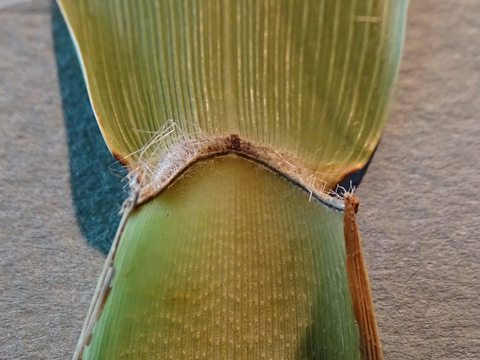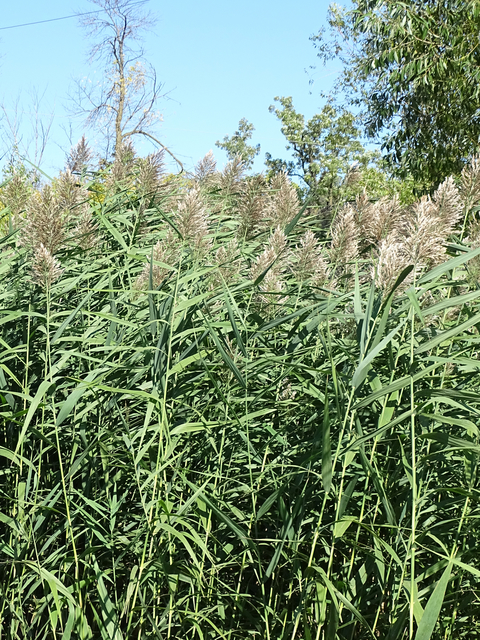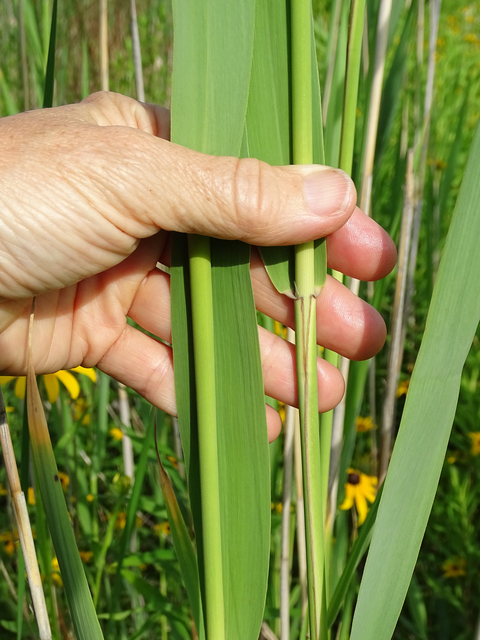Quick facts
Invasive phragmites (or invasive common reed) is a prohibited-control noxious weed. Importation, sale, and transportation of plants is prohibited.
- Invasive phragmites can form dense stands that displace native phragmites and other wetland plant species, reduce habitat quality for fish and wildlife, and alter ecosystem functioning and hydrology.
- Invasive phragmites are easily confused with the native phragmites.
The Minnesota Department of Agriculture monitors this invasive species. Please report it at Report a Pest.
How to identify invasive phragmites
Invasive phragmites (Phragmites australis ss. australis) is a perennial grass with large flower heads reaching heights of up to 20 feet.
Stem
- Cane-like stems.
- Dull, hollow, tan and ridged.
Leaves
- Deep green leaves up to 20 inches long and 1/2 to 1-1/2 inches wide.
- The membrane at the junction of the leaf sheath and blade (the ligule) is less than one millimeter.
- Sheathes tightly adhere to the stem and remain attached through winter.
Flowers
- Dense, feathery seed heads up to 16 inches long.
- Green to purple when in bloom and change to tan-gold over time.
Seeds
- Grayish in color, covered in fine silky hairs.
- Each flowering stalk produces thousands of seeds.
Roots
- Produces rhizomes that can reach lengths of up to 60 feet and depths of six feet and allow for vegetative reproduction.
- Also capable of spreading via stolons.
Reviewed in 2023




